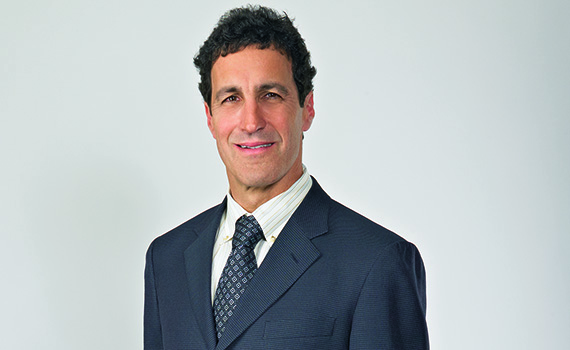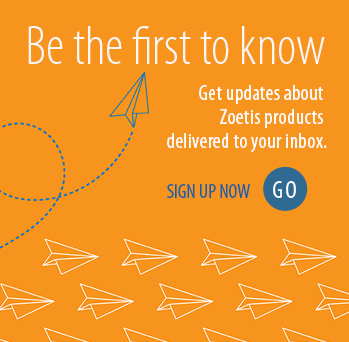How to avoid performance drops when initiating coccidiosis vaccination
An interview with Jon Schaeffer, DVM, Director of Poultry Veterinary Services, Zoetis
Q: Today more poultry companies are vaccinating against coccidiosis, but performance can initially suffer. Why?
JS: This is a complex question and there are several theories. It could be that, initially, litter isn’t adequately and uniformly populated with Eimeria oocysts. As a result, autoinfection — the ingestion and recycling of oocysts and resulting development of immunity — isn’t consistent throughout the flock during early growout. That can detract from performance in the first cycle that vaccination is used compared to the second and third cycles.
Q: The 14- to 21-day growout period after initial vaccination seems to be especially problematic. What’s going on?
JS: One of the problems we often see is incomplete coccidiosis vaccination at the hatchery. Some birds are missed and they’re immunologically naïve. Their first exposure to coccididal oocysts is to vaccine occysts shed by adequately vaccinated birds. That challenge is excessive, and the naïve birds end up with coccidiosis that sometimes contributes to the development of necrotic enteritis (NE).
Q: Is there any way to avoid a performance drop when initiating vaccination?
JS: First, make sure coccidiosis vaccination at the hatchery is properly administered so as many chicks as possible receive live, fresh vaccine.
As an additional measure, an ionophore can be administered after vaccination at about 14 to 21 days of age to help maintain performance. This is often called a bioshuttle program. The ionophore can shut down excessive cycling in naïve birds, thereby preventing NE mortality. Exactly when to administer the ionophore is determined by the expected onset of NE.
The Eimeria cycling that occurs prior to introducing ionophores is sufficient to stimulate immunity and contribute to repopulating the litter with vaccine-strain oocysts.
Q: Is there any research that shows a bioshuttle program works?
JS: Yes. We conducted a study with Southern Poultry Research involving broilers vaccinated against coccidiosis. Compared to broilers that didn’t get an in-feed anticoccidial, broilers fed Avatec® (lasalocid) at 68 grams per ton of feed from day 18 to either 35 or 50 days of age showed at least a 3-point (0.03) feed-conversion improvement. In birds grown to 60 days, feed conversion improved 5 to 6 points (0.05 to 0.06). The group fed Avatec also had fewer coccidial lesions and much better weight gain.1
Q: Can a bioshuttle program be cost-effective?
JS: At the time we conducted our study, we figured that in a 1 million broiler-per-week complex growing a 9-pound bird processed at 60 days, an annual return of over $2 million a year could be realized due to a 5-point (0.05) improvement in feed conversion in vaccinated birds treated with Avatec.
Of course, those figures will vary depending on the cost of corn, but since producers say grain costs are their top challenge,2 any improvement in feed conversion translates into economic improvement.
Q: If Avatec is used after the first vaccination cycle, can it also be used for subsequent vaccination cycles?
JS: Yes, it can. Most producers develop their anticoccidial programs around two to four different rotations annually since rotation helps prevent the development of coccididal resistance. Typically, if a particular ionophore such as Avatec is selected for positioning in a bioshuttle program and performance remains satisfactory, the same ionophore is used until flocks are rotated off the vaccine.
Q: Are there any precautions or seasonal considerations when using Avatec?
JS: No. There are no special requirements when using Avatec at the dose rate of 68 to 81 grams per ton of feed. That’s usually adequate for preventing coccidiosis.3 Avatec can be fed any time of year.
All trademarks are the property of Zoetis Services LLC or a related company or a licensor unless otherwise noted.
1 Mathis G, et al. Effect of lasalocid or salinomycin administration on performance and immunity following coccidia vaccination of commercial broilers. J Appl Poult Res. 2014 Dec;23(4):577-585.
2 6 takeaways from the 2018 Poultry Nutrition & Feed Survey. Wattagnet.com. April 4, 2018.
3 Data on file, Study Report No. 26-13-70AQO, Zoetis, LLC.
TOOLBOX, Issue 11
Toolbox is a series of interviews with veterinarians and other technical specialists about their experiences managing antimicrobials, vaccines and other tools for poultry health. It is produced by the editors of Poultry Health Today on behalf of the US Poultry Business of Zoetis.
PHA-00076
Mar 2019
Posted on June 1, 2022













